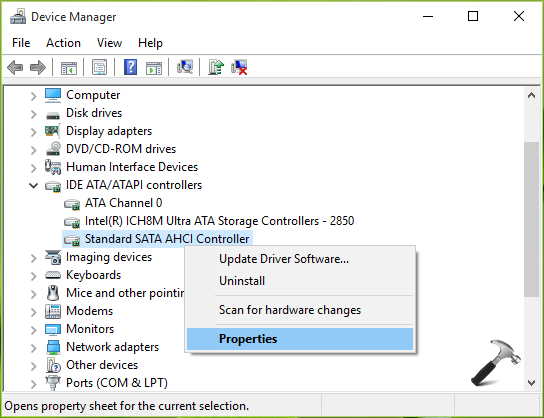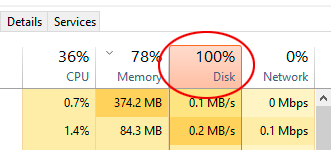Windows 10 Disk %100
I dont know why, but when i buy new computer they always make the C: so small u cannot add anything on. I want to work with visual basic and it takes up the whole drive. I have uninstalled it now. But still the drive is full. I want to allocate some space from Disk1 (D drive) to Disk 0 (C drive). I cannot expand Disk 0 as the option is not open to select expand only open on Disk 1 which i want to take from. Can someone tell me how can i take from Disk 1 and add to Disk 0 if the expand wont allow me PLEASE HELP.

OK!So, as I suspected, C and D are two individual drives.Whoever built your PC with a 30GB drive (with 8GB taken up by a Recovery partition!) should be taken out back and shot. Unless of course this is a spouse who did it. Any other relative/friend/PC store.they need to never configure a PC again.That is simply far too small for a current Windows OS drive.And no, you can't expand the C partition into the D space, because they are two individual drives.My suggestion?Actually, this involves multiple steps.1.
Undo the BitLocker encryption. Unless you really need it, and know what you are doing with it, and how to recover.that is actually quite dangerous and may lead to total data loss2.

Find whatever data is on the D drive, and save that elsewhere. It looks to be very minimal, so an SD card should do it3. Migrate the current Disk 0 to the Disk 1. Your Disk 1 (465GB) will become the C drive.4. Disconnect the existing 30GB drive, and put it in a drawer somewhere.For #3 - Acronis Trueimage, Easus Todo, Macrium Reflect, Casper.they can all do that migration pretty easily. OK!So, as I suspected, C and D are two individual drives.Whoever built your PC with a 30GB drive (with 8GB taken up by a Recovery partition!) should be taken out back and shot. Unless of course this is a spouse who did it.
Any other relative/friend/PC store.they need to never configure a PC again.That is simply far too small for a current Windows OS drive.And no, you can't expand the C partition into the D space, because they are two individual drives.My suggestion?Actually, this involves multiple steps.1. Undo the BitLocker encryption. Unless you really need it, and know what you are doing with it, and how to recover.that is actually quite dangerous and may lead to total data loss2.
Find whatever data is on the D drive, and save that elsewhere. It looks to be very minimal, so an SD card should do it3. Migrate the current Disk 0 to the Disk 1. Your Disk 1 (465GB) will become the C drive.4. Disconnect the existing 30GB drive, and put it in a drawer somewhere.For #3 - Acronis Trueimage, Easus Todo, Macrium Reflect, Casper.they can all do that migration pretty easily.
. Right click on the Start button. Click Command Prompt (Admin). Type.
Type list disk. A list of disks will be displayed. Note the number of the disk which has the partition you wish to remove. (If in doubt open disk management and look there, see steps above). Type select disk n (Replace n with the disk number with the partition you wish to remove). Type list partition. A list of partitions will be displayed and hopefully, you should see one called Recovery and it is the same size as the one you wish to remove.
Type select partition n (Replace n with the partition you wish to delete). Type delete partition override. The recovery partition will now be deleted.
Windows 10 Disk 100 Active Time
Right click on the unallocated space and choose New Simple Volume. A wizard appears. Click Next to continue. A window appears. Choose how much space the new volume should use out of the unallocated space.
To use all of the space leave the default and click Next or to use some of the space enter a new number and click Next. You will be asked to assign a letter to the partition. Choose the letter from the drop down. Finally you will be asked to format the drive. The default file system is but you can change it to or another file system if you so wish. Enter a volume label and click Next.
Finally click Finish.